Best climbing plants: take your garden to the next level with these top choices
Our pick of the best climbing plants will help you to cloak a bare trellis or pergola, disguise an ugly wall or add height to your borders
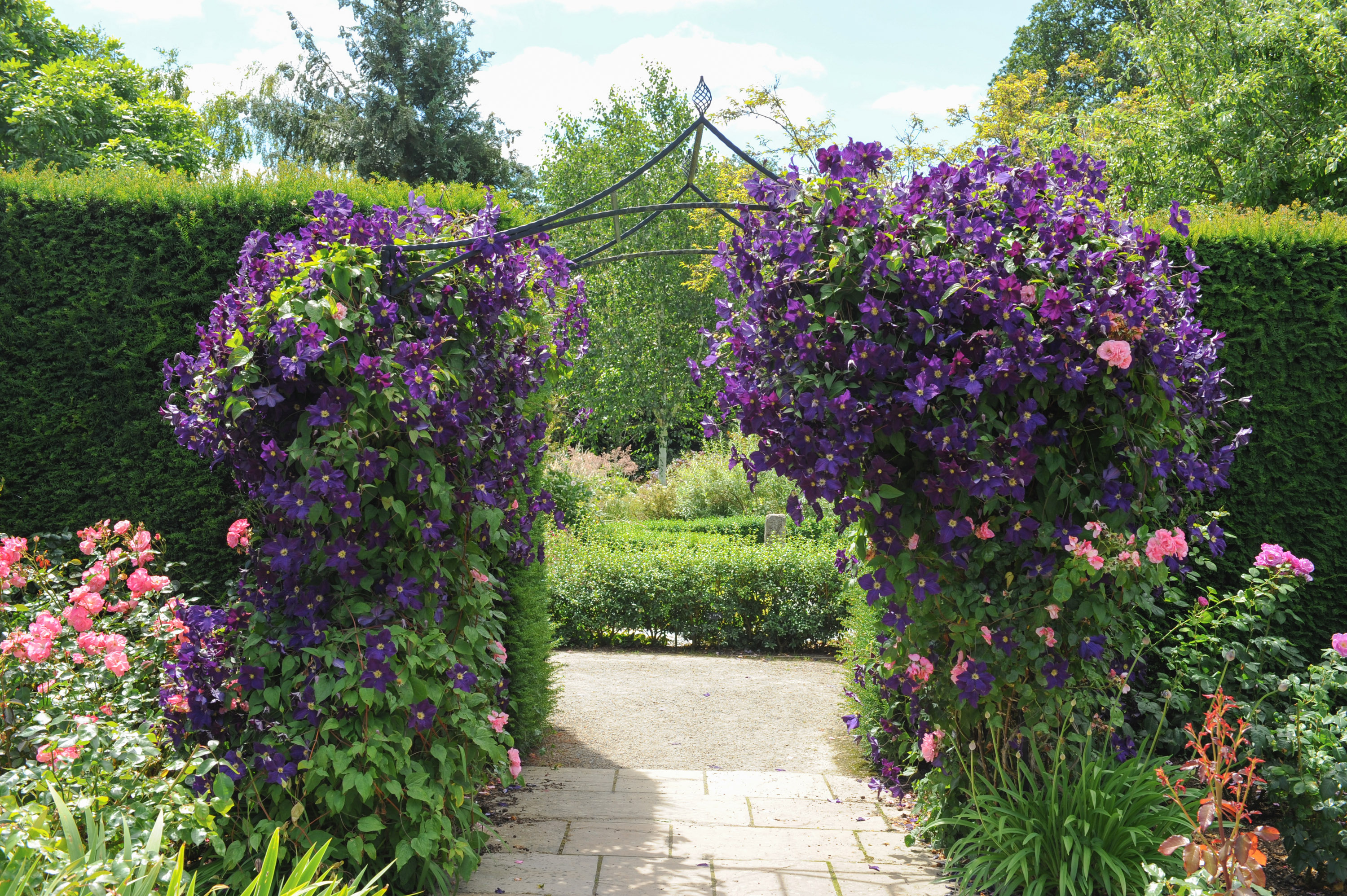

Growing the best climbing plants is a brilliantly simple way to create a garden with the wow-factor. Plants which grow upwards can clothe a pergola, an arch or a trellis, disguise an unsightly shed or a plain brick wall, or create added curb appeal around an underwhelming front door.
The good news is that you don’t have to wait for years if you need an instant disguise, as there are some fast growers which will transform an area in one to two years. Equally, there are some classic plant choices which are definitely worth a little extra time and patience for spectacular results against your fences, over your pergola or as part of your flowerbed ideas.
'The best climbing plants add an invaluable vertical element to your garden, softening walls, fences, arches and pergolas with their foliage and colourful flowers,' says Marcus Eyles, Horticultural Director at Dobbies. 'With a huge range to choose from, they help create a stunning feature in any size garden.' Find out what to grow in your space with our pick of the best climbing plants.
Best climbing plants
1. Honeysuckle
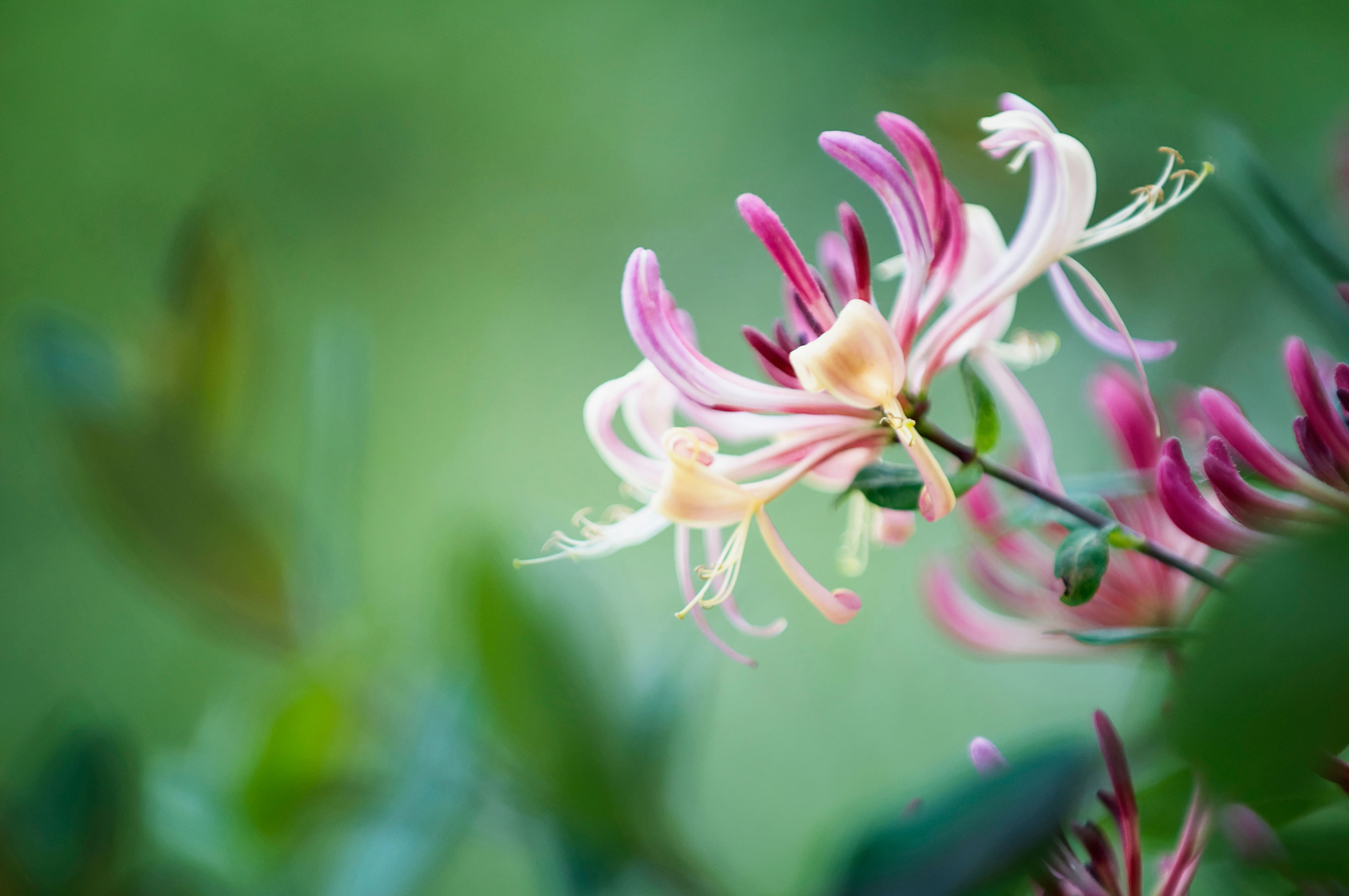
This is always a favorite for cottage garden ideas. It will twine its semi evergreen or deciduous leaves over a trellis or pergola in quick time. Expect most honeysuckles to grow two to three metres in just one year.
Flowering from summer to autumn, the tubular blooms give way to shiny red berries. These are easy-care plants, which love light shade. Cut back the flowered stems by a third in late summer, and then tidy up again in late winter.
Try lonicera periclymenum for dark pink and white flowers with a honey sweet fragrance, which climbs up to 7m tall. For a golden yellow flower, lonicera x tellmanianna is a deciduous plant which will top 5m.
There's more advice on how to grow honeysuckle in our guide.
2. CUP AND SAUCER VINE (COBAEA SCANDENS)
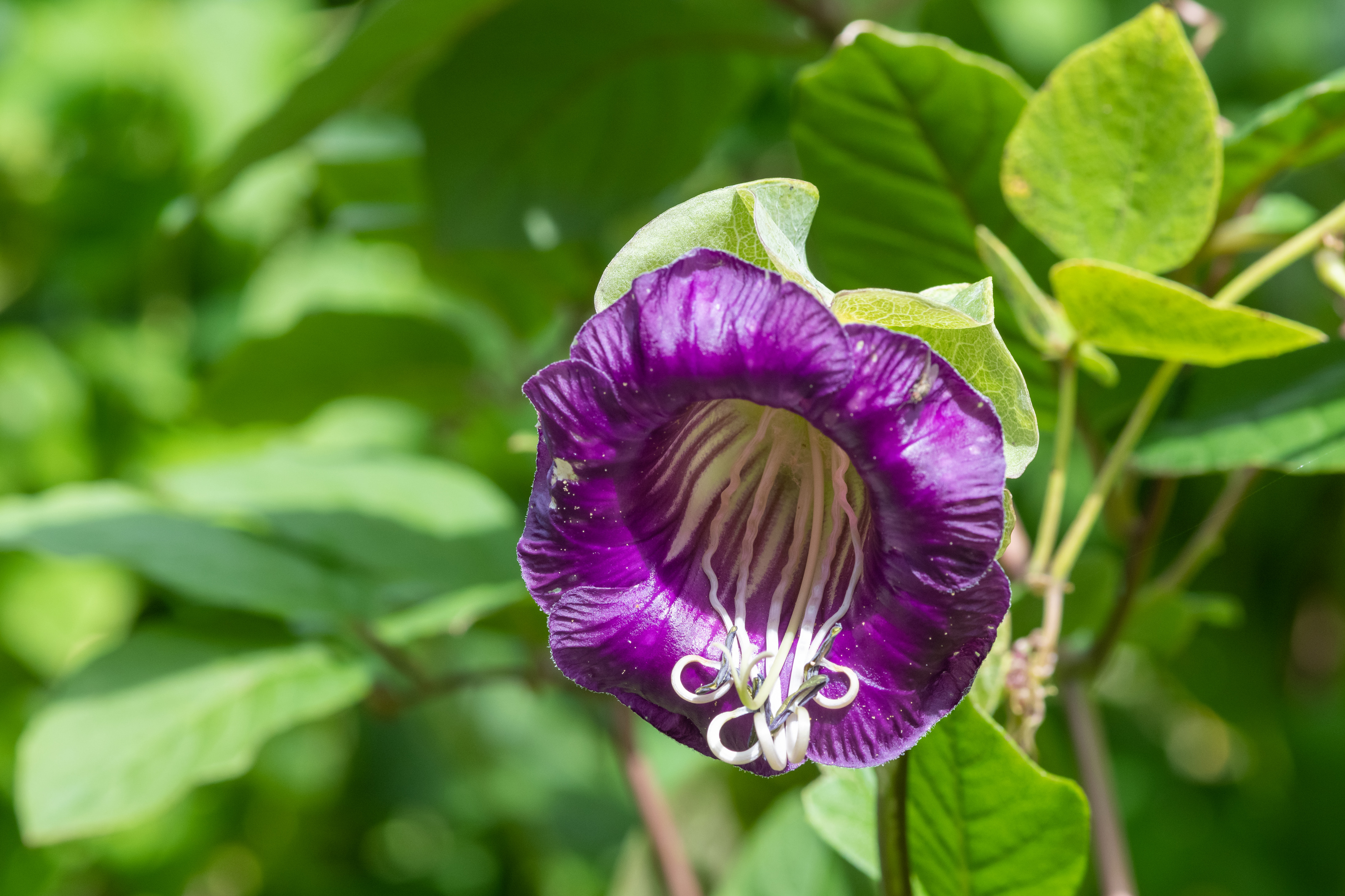
Despite its exotic looks with purple bell-shaped flowers, this perennial climber is easy to grow and will cover an arch, trellis or a wall in two years, reaching about 3m tall.
It prefers a sheltered spot, ideally west or south facing, but it’s not fussy about soil type, so long as it is not soggy. It can be grown in a pot too. It will need regular watering in dry spells whether in a container or in the ground.
The flowers bloom from midsummer to winter, and the plant benefits from regular dead heading. Pinch out the tips of the vine to encourage it to grow lateral shoots. If you are planting a few at the base of a wall, fence or trellis, place them around 15cm apart. There is also a white version, cobaea scandens f. alba.
Head over to our container gardening ideas for more ideas for growing plants in pots.
3. Virginia creeper
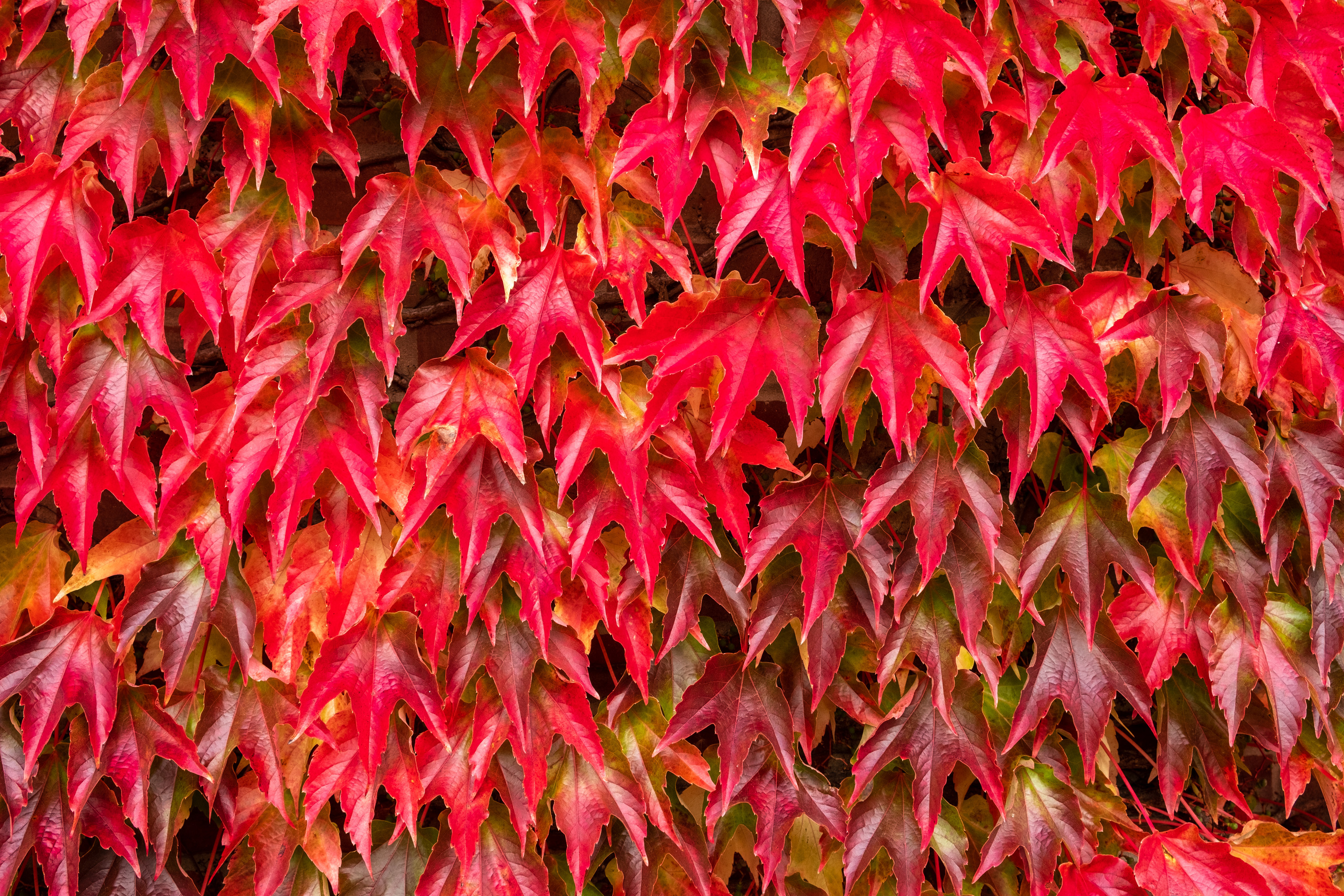
This plant, originally from North America, is renowned for its glowing autumn colours of sunset red, yellow and rich gold. It’s usually grown as one of the best foliage plants, as the tiny flowers are insignificant, although the large leaves will fall in winter leaving a bare framework. It is a good choice for beginners as it will grow in any soil, tolerates sun and shade, and is easy to prune.
However, this climber only takes five to ten years to reach its full height of about 50m with a spread of 5m, so it is only suitable for a large garden, or the walls of a generously proportioned house.
It should be trimmed annually, in autumn or early winter, and if it is growing up a house wall, care should be taken to keep it away from eaves, gutters and windows.
4. Chocolate vine
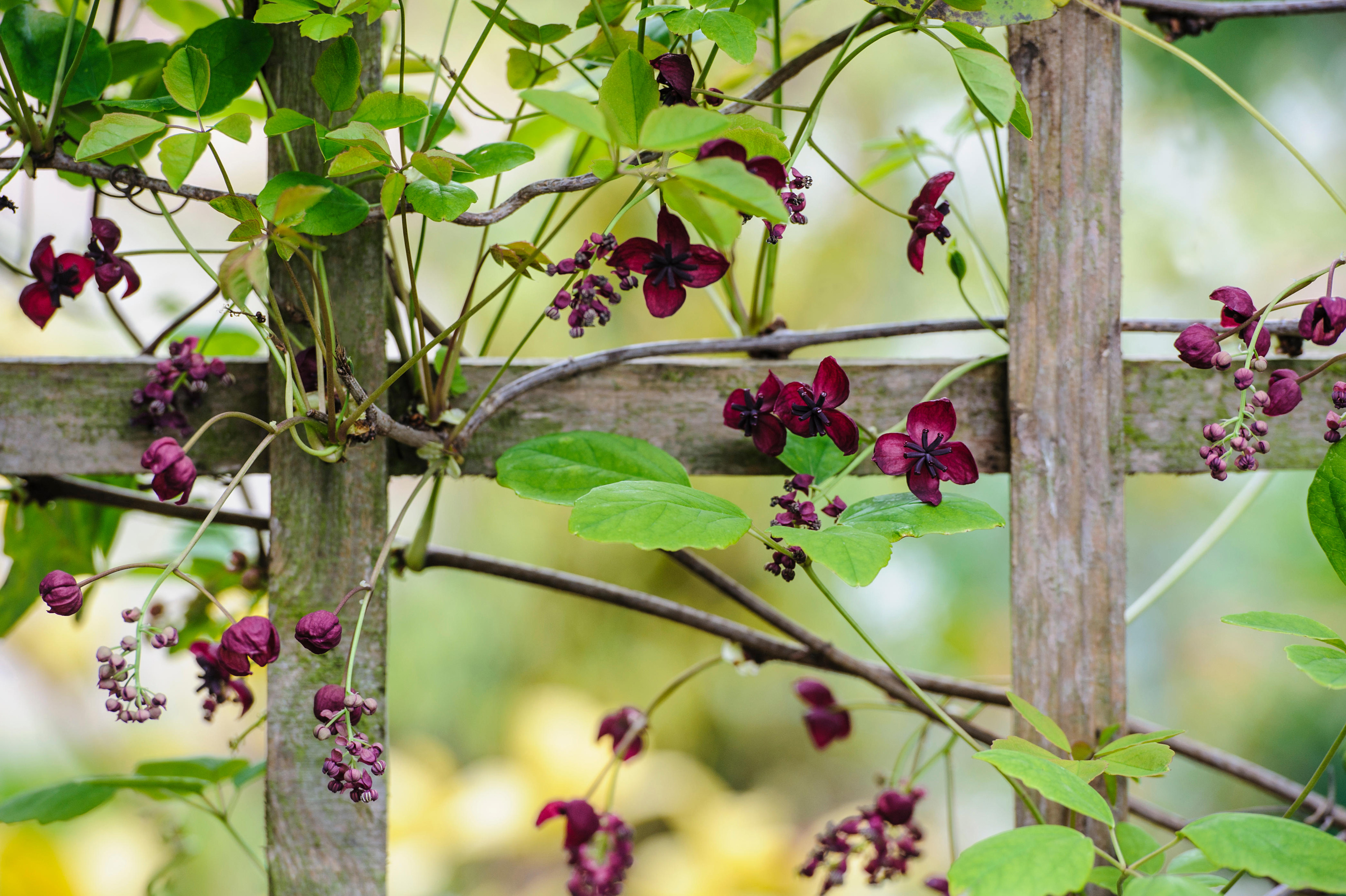
A loosely scrambling plant, also known as Akebia quinata, clustered with purple flowers which are gorgeously scented with chocolate, appearing between March and May. It has semi-evergreen foliage, and will reach its ultimate height of 8 -12m and spread of 8m within five years. This is a good one for training over an arch or pergola (check out our pergola ideas for more inspiration). It can be wall-grown, but it will need a network of sturdy wires to twine against. New growth should be tied in regularly.
It tolerates all kinds of soil, but add plenty of compost when planting, and grow it in full sun or partial shade. If it grows too vigorously for the space, prune back after flowering. If you have two plants, it may fertilise and produce edible fruits. In certain areas of eastern USA, it is regarded as an invasive species.
5. Wisteria
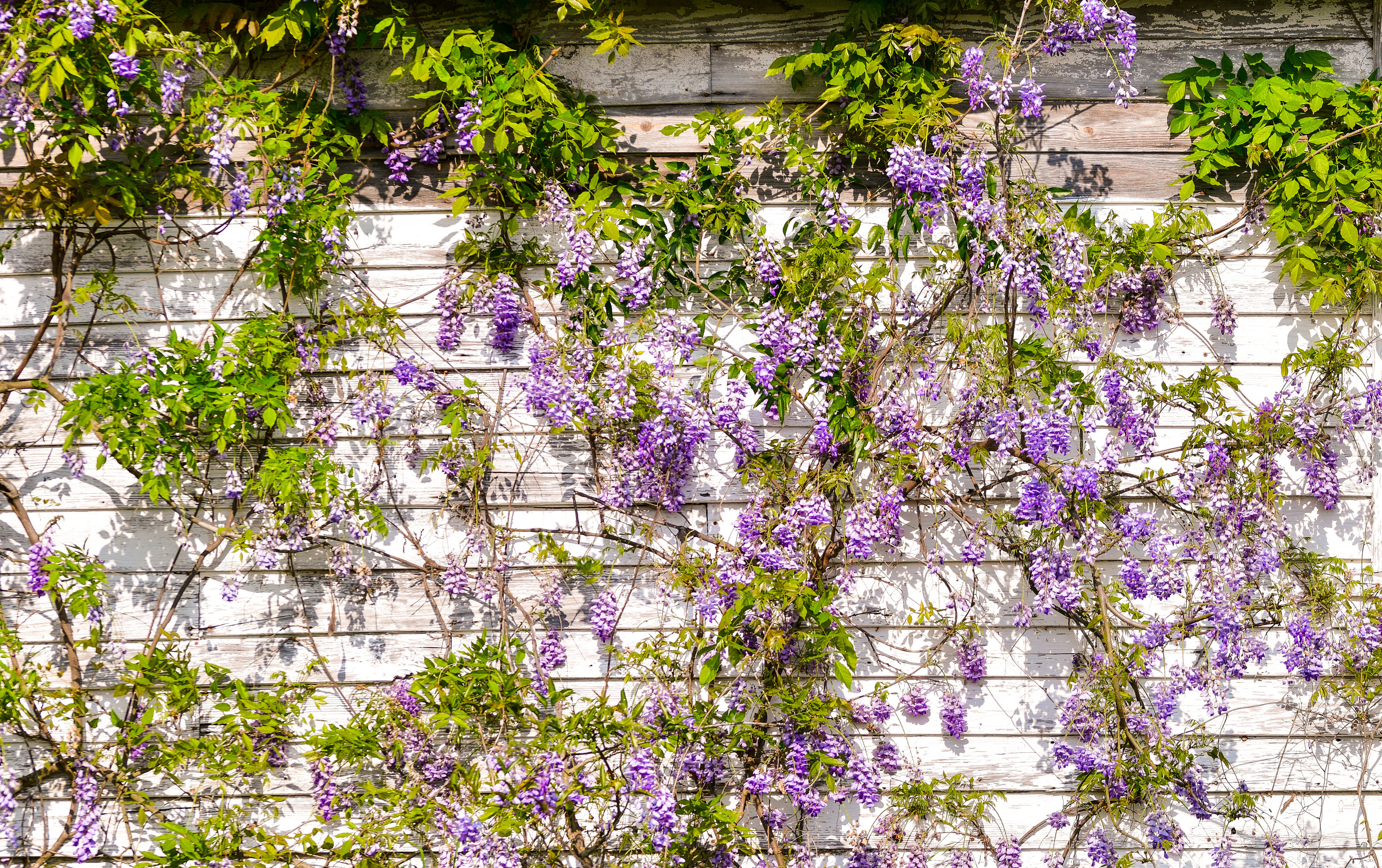
Currently enjoying a surge of popularity following its appearance adorning the Bridgerton family residence in the hit Netflix series, this stunning climber has swags of sweetly scented, pale lilac coloured blooms. It can be slow to get started, taking five years to flower, but once established, it will grow vigorously in a spot in full sun.
Choose a plant that has been grafted (look for the knobbly bit at the base of the stem), rather than one grown from seed, otherwise you could wait 20 years for it to blossom. Plant in either autumn or spring. For pergolas and arches, choose a Japanese wisteria and for walls, opt for Chinese wisteria (w.sinensis is a good one). Wall-based wisteria will need a strong support grid of horizontal wires attached to vine-eyes, which are screwed into masonry around every 50cm.
Feed plants in spring with a liquid tomato fertiliser and keep well-watered as they establish. They need pruning twice a year, in July and in January/February. Wisteria can reach 10m tall and 20m wide, so check the expected height and spread against your space before planting.
There's more expert tips on how to grow wisteria in our guide.
6. Passion flower
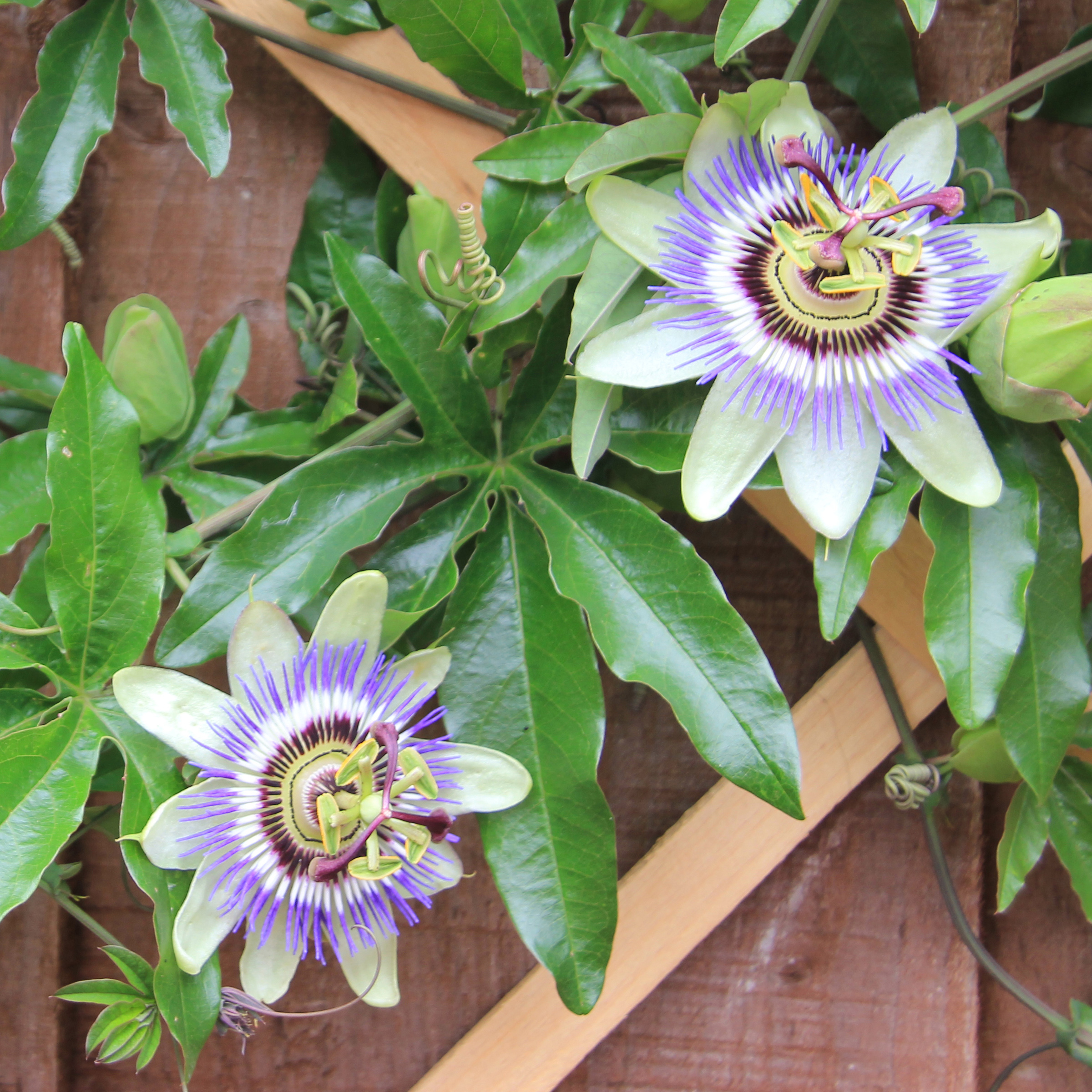
Each exotic flower is a work of art on this evergreen, woody climber which grows upwards using tightly spiralling tendrils. It blooms from summer into autumn (July to October in the northern hemisphere), and produces orange fruits in autumn. This can be a delicate plant, so site away from cold, drying winds and mulch the base for added winter protection. It prefers a sunny place, south- or south-west facing and will also thrive in a container. The ultimate height is 10m and spread is 3.5m, and it will reach the top of a doorway in around two to three years.
Prune plants by snipping off the weakest shoots and pinch out unwanted growth during the growing season. Some types of passion flower are only suitable for growing in a greenhouse.
For an outdoor fuss-free option, hardy passiflora caerulea has beautifully marked purple and white flowers. Passiflora caerulea ‘Constance Elliot’ has stunning white, scented flowers, but this one might need some extra winter protection, such as a fleece cover during hard frosts. There's tips on how to protect plants from winter in our guide.
7. SOLANUM CRISPUM
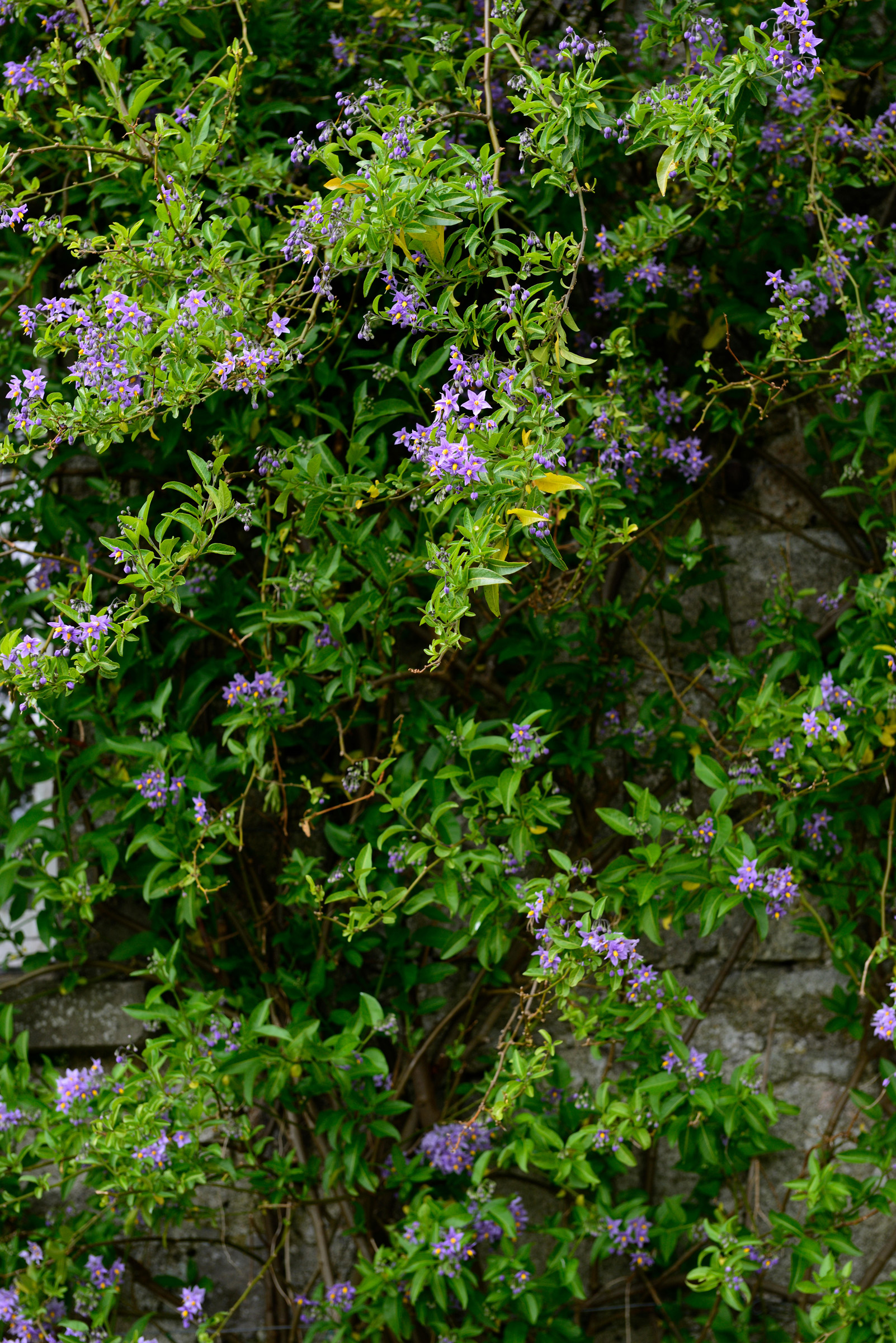
If you want an exotic covering for a plain wall or for garden fence ideas to clad the neighbors’ ugly fence, the Chilean potato vine could be your best friend.
With masses of deep purple scented blooms throughout summer, this scented, semi evergreen climber has the wow factor. Choose a sunny, sheltered spot for best results, and tie in the stems to horizontal wires to train it where you want it to grow. It will reach a height of 6m and a spread of 2m after five to 10 years. Prune in early spring, by cutting a third of the oldest stems down to ground level.
8. Clematis
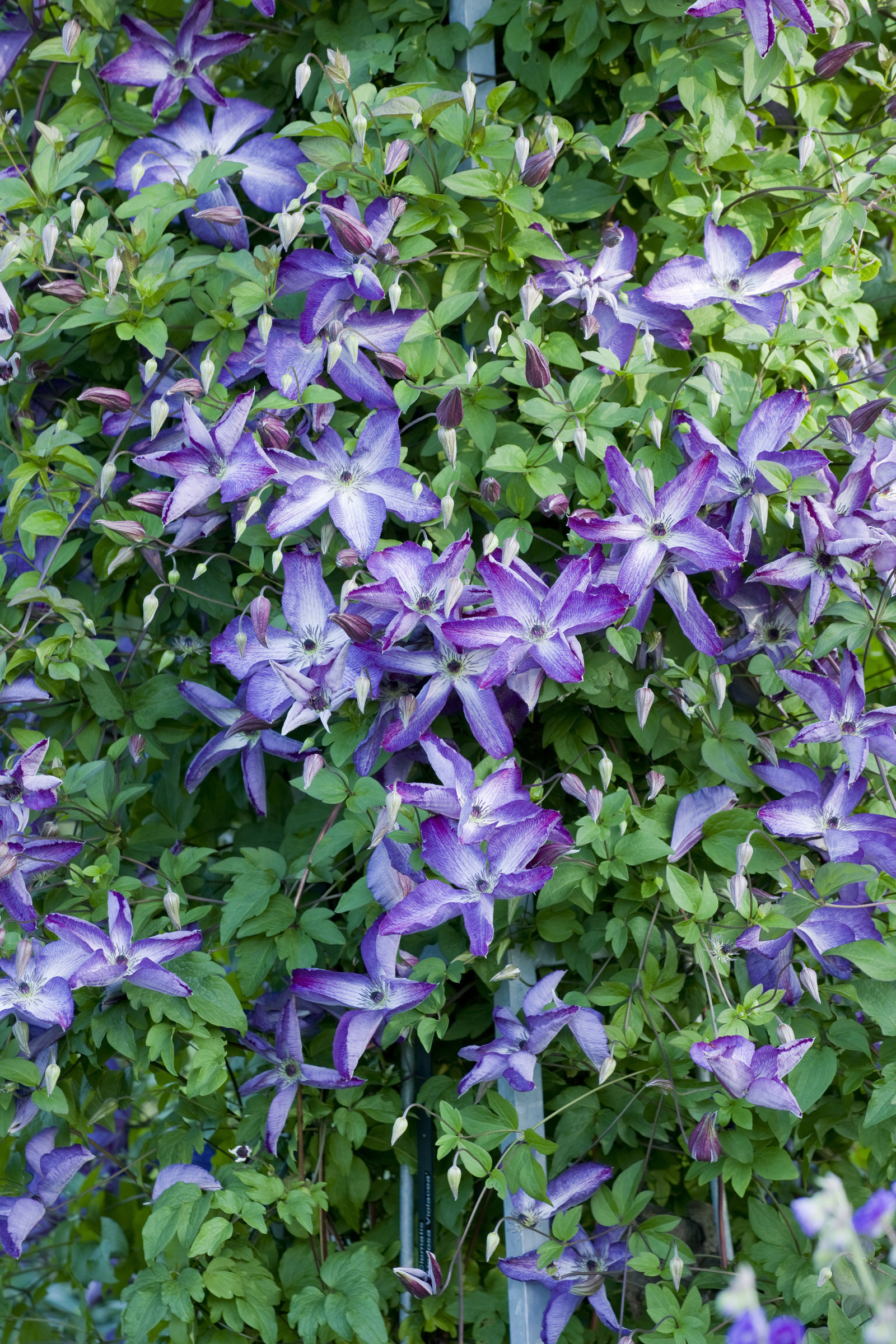
If you're keen to learn how to grow clematis, you'll be spoiled for choice. There are so many covetable clematis on offer that the only problem will be choosing which to buy.
These scrambling, twining plants flower at different times, grow at varying rates and there are ten different flower shapes, from single large ones to bell shaped and even tubular, so factor in your preferences when buying.
Clematis fall into three main groups, early flowering, early to mid-season flowering and late flowering. They can be grown in containers or in the ground. Choose a good sized, strong plant (specialist mail order nurseries are often a great place to buy).
Early flowering varieties have small individual blooms, such as c.alpina ‘Pamela Jackman,’ with its deep blue, nodding petals, grows up to 2m tall.
A mid-season choice, flowering in March to May is clematis ‘Armandii,’ which is smothered in starry white flowers on evergreen foliage. It’s a fast grower, which reaches 5m tall.
Late flowering clematis include ‘Etoile Violette’ with stunning velvety purple open flowers. It will grow to around 5m tall and scrambles happily over natural structures such as trees, as well as trellis and obelisks.
9. Star jasmine
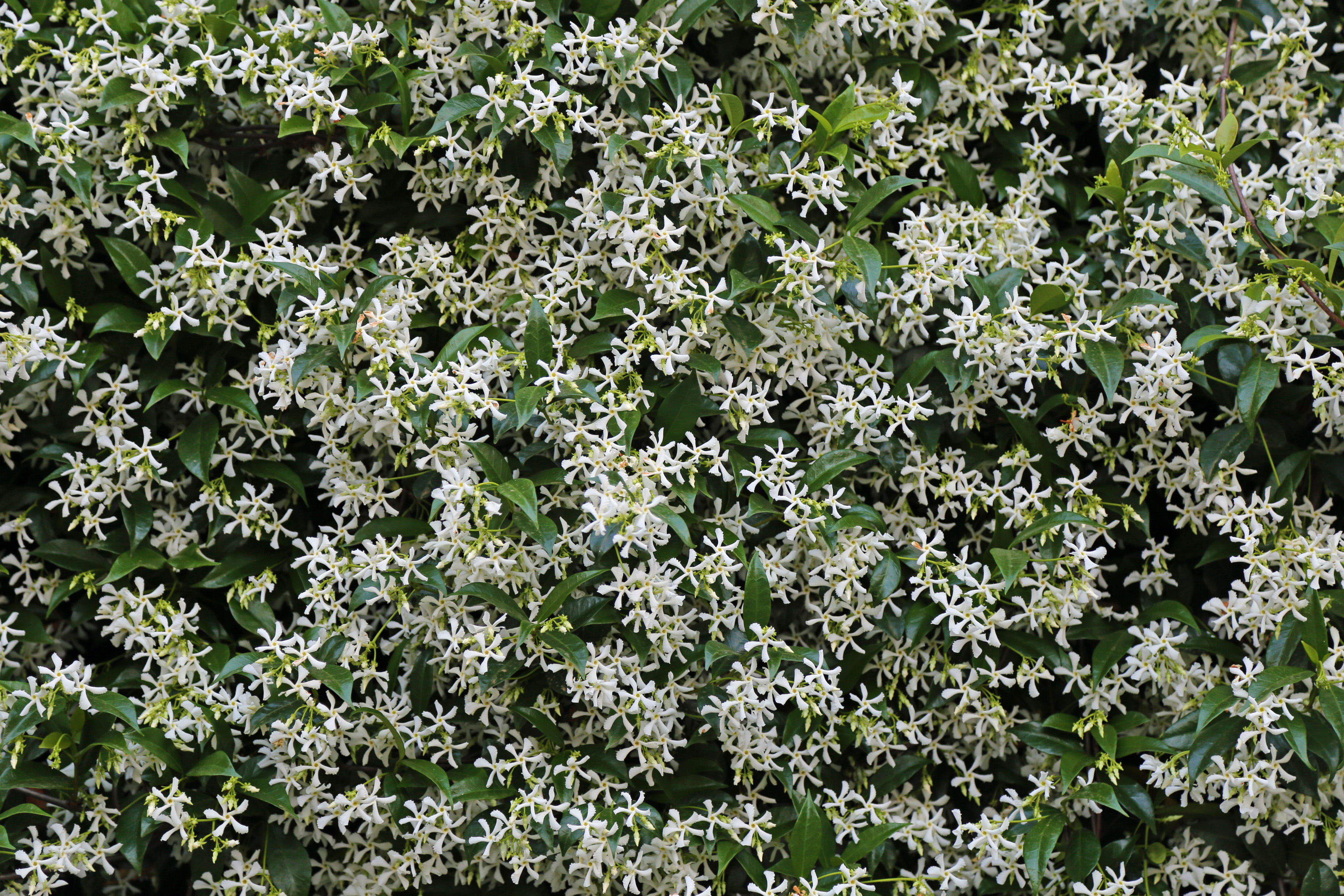
Sweetly scented and with evergreen foliage, trachelospermum jasminoides is a great choice for walls or trellis in part shade. The starry flower clusters smell glorious on hot summer nights, and in winter, the leaves turn bronze, but won’t drop.
Star jasmine is a twining climber, which grows about 10-20cm a year, so can be a good option for small garden ideas. Plant in the ground or in a container near a seating area to take full advantage of its heady fragrance.
Container grown jasmine needs a large pot and frequent watering to keep the soil moist. In late winter or early spring, add fertiliser and a mulch of well-rotted compost. Thin out the plant after it has flowered.
There's more options for shade loving plants in our guide.
10. Ivy
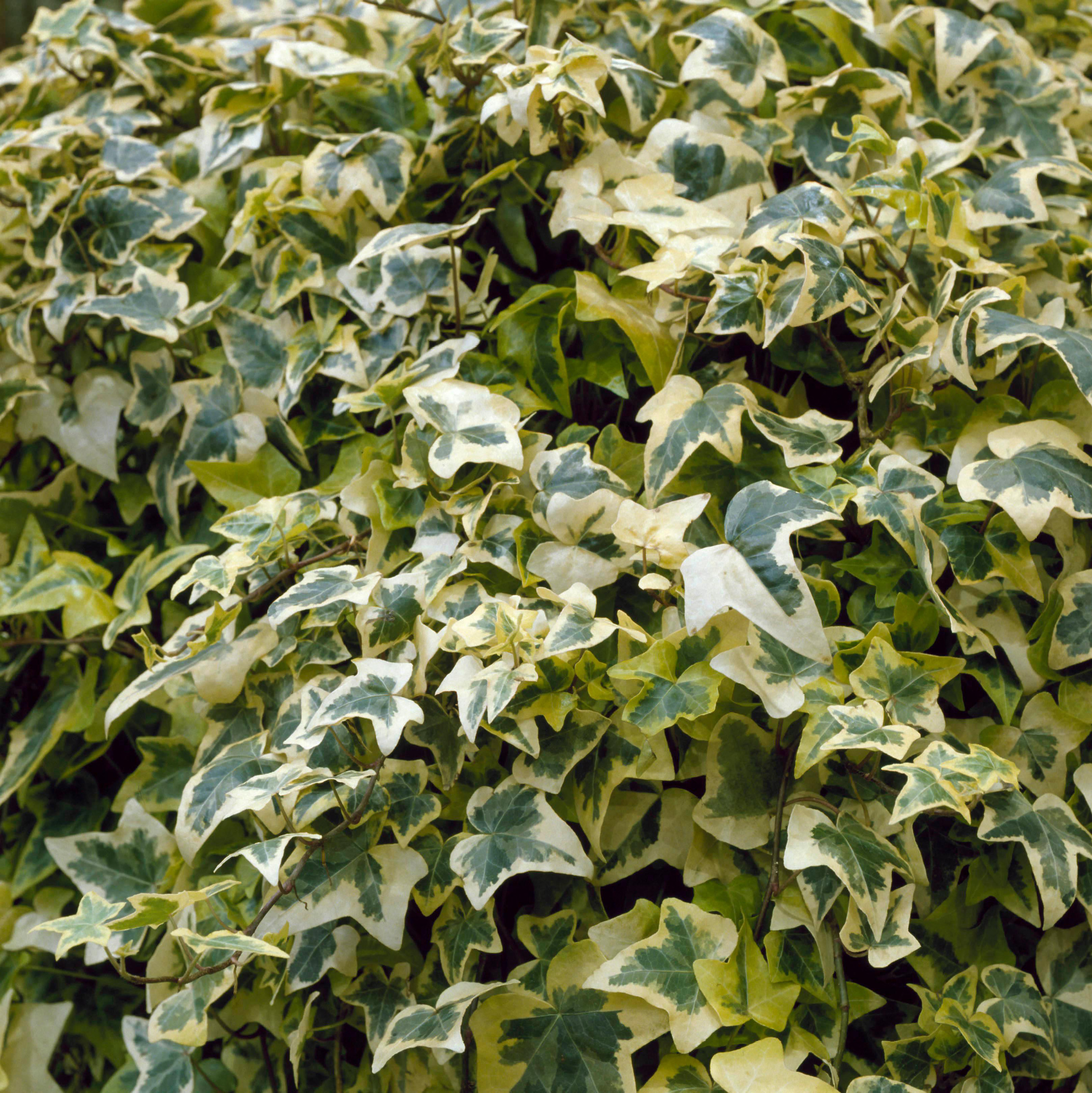
Sometimes regarded as a garden thug, there is another side to ivy. It's worth considering for garden wall ideas as it offers a super-fast way to clad a wall in green. Plus, it will not lose its leaves in winter, and it has benefits for beneficial wildlife, too, as it provides a source of pollen in the lean winter months.
That said, it can be invasive, growing 2.7m in a year, so keep a close eye on it, and cut back ruthlessly when needed. Take care when choosing, too, as some ivies are creepers, not climbers.
Try a variegated plant, such as ivy ‘Goldchild’ for subtle green tones edged with gold. It will grow up to 1.2 m in a year if planted in a sunny spot. Ivy does not need any supports, as it has aerial roots which act like suckers. ‘Sulphur Heart’ has leaves in dual shades of green, and it is a vigorous climber reaching up to 8m.
What is the fastest growing climbing plant?
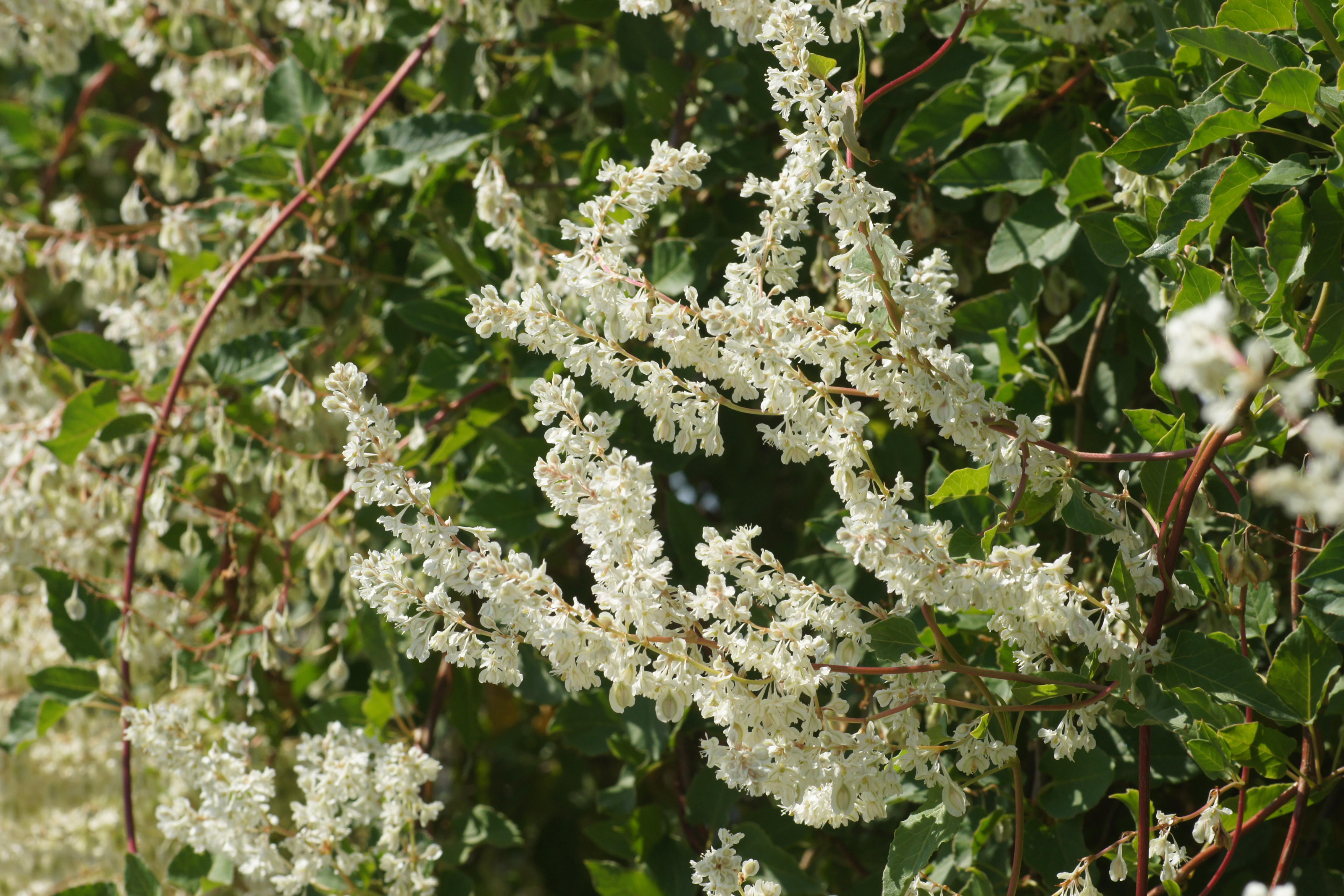
The Russian Vine or fallopia baldschuanica will cover a trellis, fence or pergola faster than any other plant. It can grow an incredible 4m in one year in full sun or partial shade. It has small green leaves and creamy white flowers in August and September.
Although it will almost grow before your eyes covering a multitude of sins, plant it with caution, as once it has established in your garden, you may struggle to get rid of Russian Vine. 'It is extremely fast growing and can end up choking everything in its path,' advises the RHS. Cut it back each spring, to fit your space and to stop it encroaching on neighbors’ gardens.
What are the best climbing plants for a trellis?
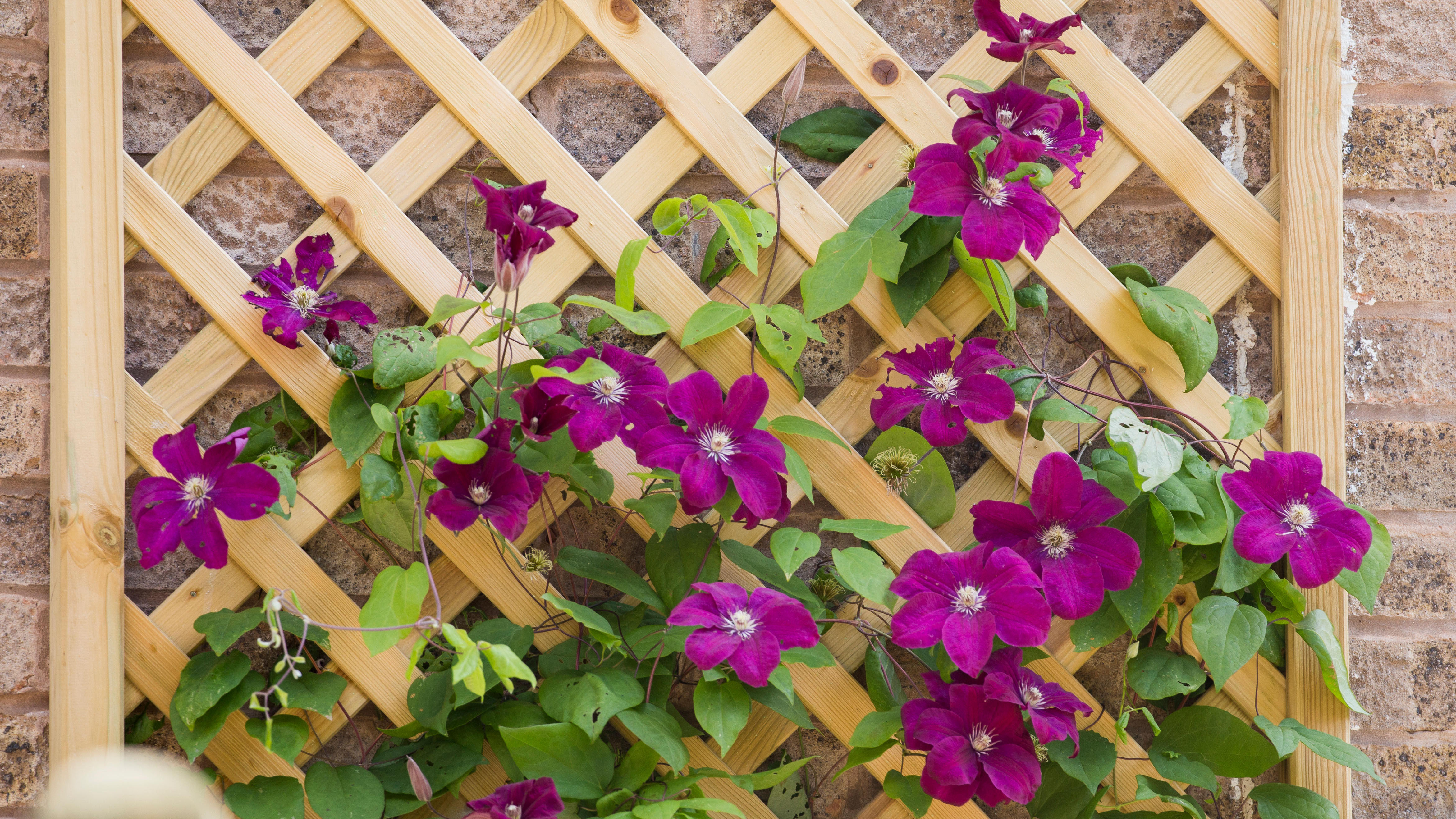
Clematis 'Etoile Violett' climbing up trellis
Clematis are fast growing, with stunning flowers and there is a huge choice of colours, shapes, sizes and flowering times to suit all size gardens.
They are one of the best cottage garden plants as they suit the romantic, whimsical vibe of these pretty gardens. As a rule, these plants like their faces in the sun, and their feet in the shade.
What are the best climbing plants for a pergola?
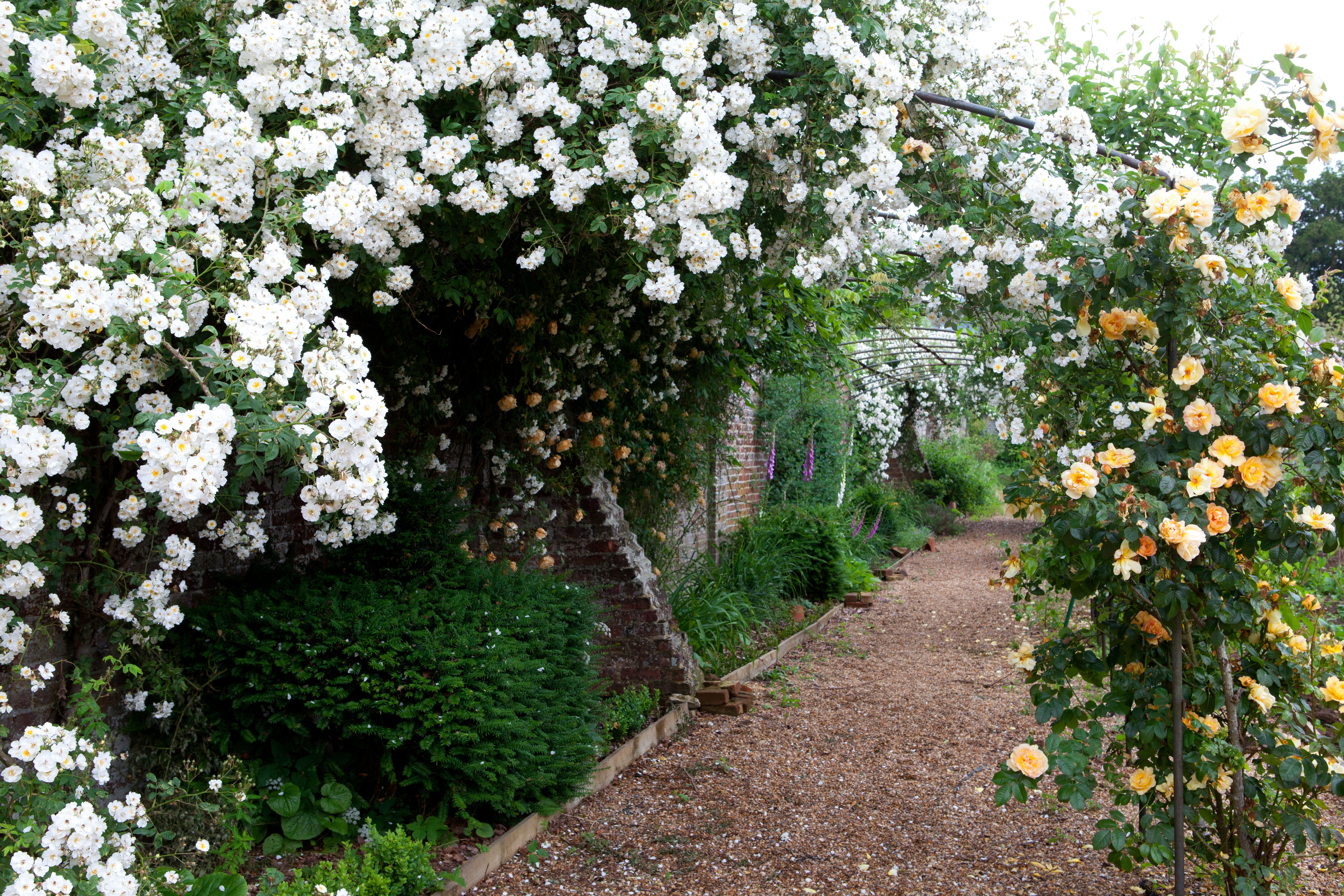
Rambling and climbing roses are a great choice for growing over pergolas. Pictured is the 'Rambling Rector' rose
A rambling rose, which usually flowers once a year, creates a magical sight when grown over a pergola. ‘Albertine’ has pretty salmon pink flowers with a sweet fragrance. It will reach 8m and has a spread of 5m. Head over to our guide on the best climbing roses for more inspiration.
For a no-fuss plant which does not need complicated pruning, Virginia Creeper will work well, as it grows quickly, and provides a brilliant splash of autumn colour. Wisteria is another great choice for a pergola.
How to plant the best climbing plants
- If the area is paved, remove a slab and work in plenty of fresh compost.
- Dig a hole, about 30 - 45cm away from the wall.
- Place the plant in the hole, backfill it, and water generously with a couple of full cans.
- Fix trellis or wire to the wall, depending on the type of climber you are planting (see below).
- 'Always plant your climber leaning towards its support, backfilling the soil around the roots,' explains Marcus Eyles of Dobbies. 'Add a good layer of mulch to boost growth, prevent weeds and retain moisture. Water well, and tie long shoots to the support with garden twine to start the plants climbing.'
How do you train climbing plants?
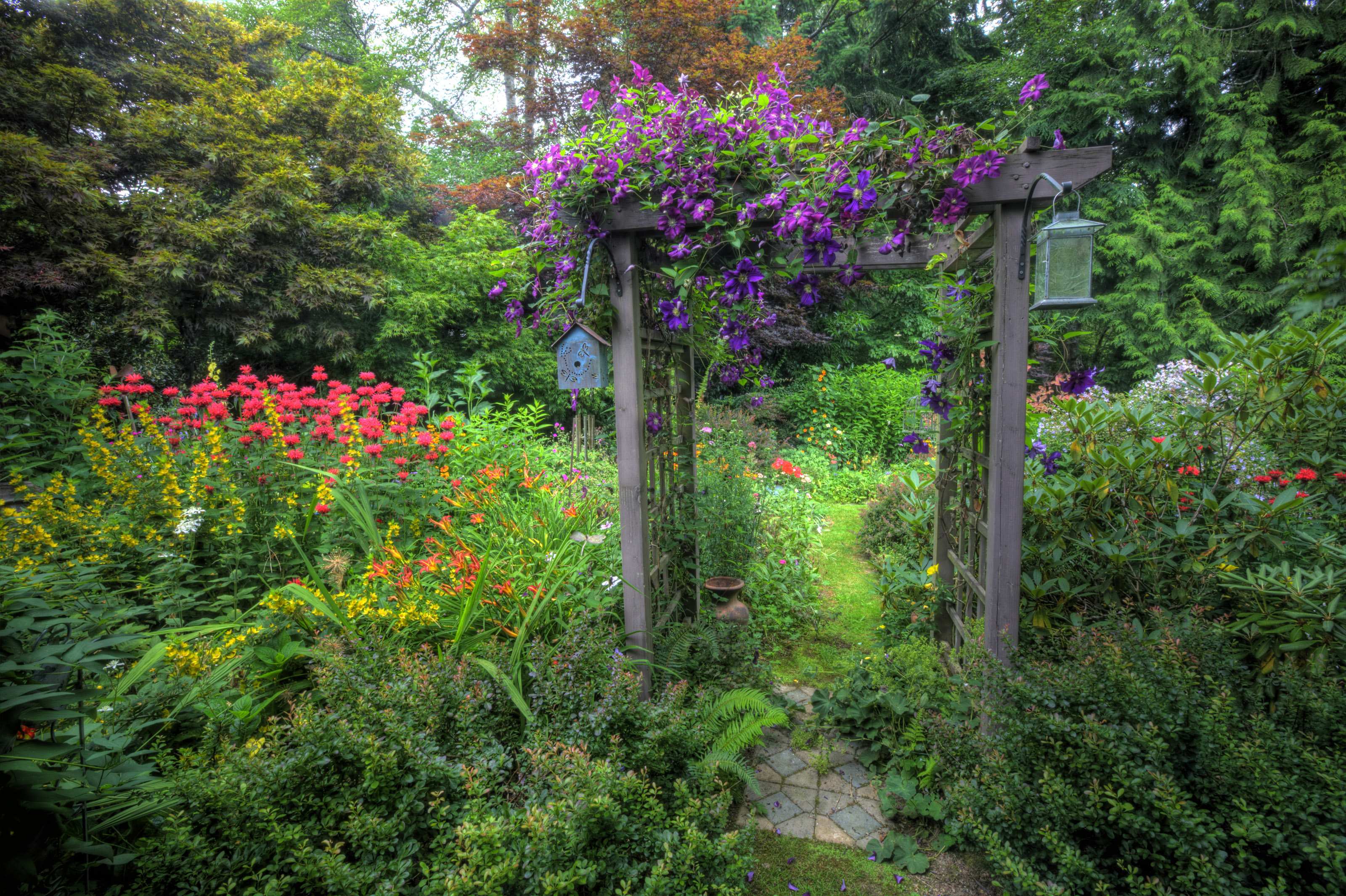
Plants climb in different ways. Some cling with tendrils, others shoot out long stems and some species grow with woody branches. Working out which climber you have will help you to train it to grow in the right way.
- Tendrils Plants including honeysuckle, clematis, and passionflowers grow with slender twining stems that coil and twist. These tendril climbers require trellis or wire to attach themselves to.
- Woody branches These are common in wall-climbing shrubs such as pyracantha which can be clipped in a flat shape and trained to hug a flat surface. Use horizontal wires at 40cm intervals to secure the branches, and aim to spread them out in a neat fan shape. After the plant has flowered, prune to keep its shape.
- Long stems Rambling and climbing roses have very long shoots which can span long distances (up to 3m). They need sturdy wooden or wire trellis attached to a solid wall or a fence, and they will need attaching with twine or soft tie. Tie in the shoots at intervals of about 50cm.
- Aerial roots Ivy and climbing hydrangea have tiny roots high up on their stems which act like suckers (as anyone who has tried to prise unwanted ivy from a wall will know!) and they will not need any help to grow upwards. Keep plants in this group pruned to stop them from taking over.
Expert tips for growing the best climbing plants
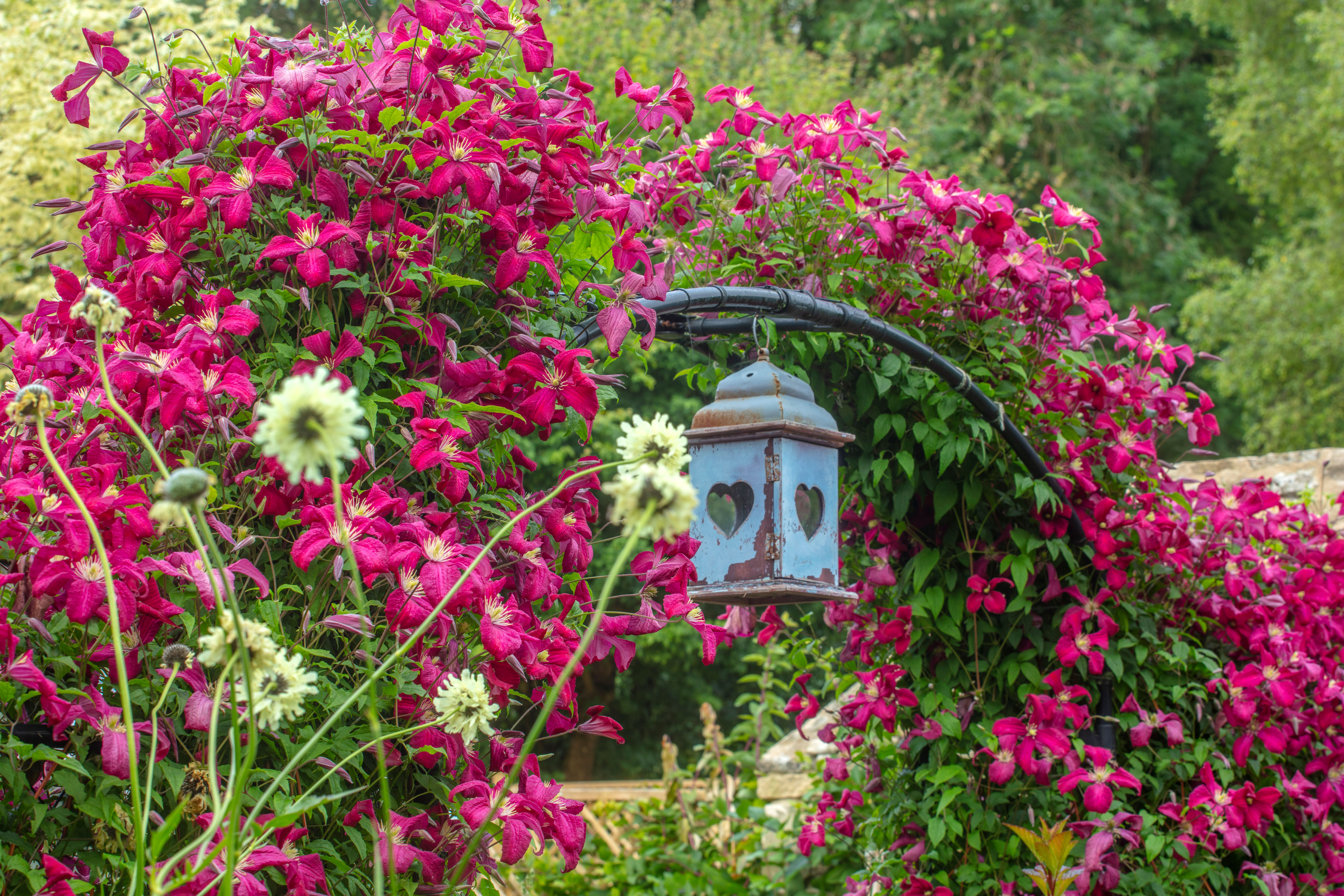
Jeremy Hall, group plant buyer at Squires has these tips for getting more of the best climbing plants into your garden.
- Try planting companion climbers that fill the same fence, wall or tree, but flower at different times. They can grow amongst each other and therefore look better for longer.
- Plant clematis nice and deep – deeper than the original pot and use compost to shade the roots.
- Need instant coverage? The fastest growing climber is the Russian vine ‘mile a minute.’ It’s got small white flowers in late spring and summer and grows very quickly. Other quick growers include Clematis montana types, and wisteria, once it has established. All are great for climbing up trellis and walls, and over arches or pergolas.
Want to use the best climbing plants to help screen your garden from neighboring properties? There's tips on this and more in our garden privacy ideas.

An experienced freelance journalist, editor and columnist writing for national magazines and websites, Fiona now specialises in gardens. She enjoys finding and writing about all kinds, from the tiniest town plots to impressively designed ones in grand country houses.
